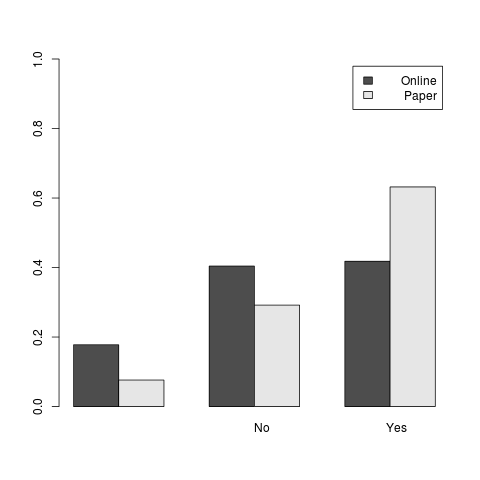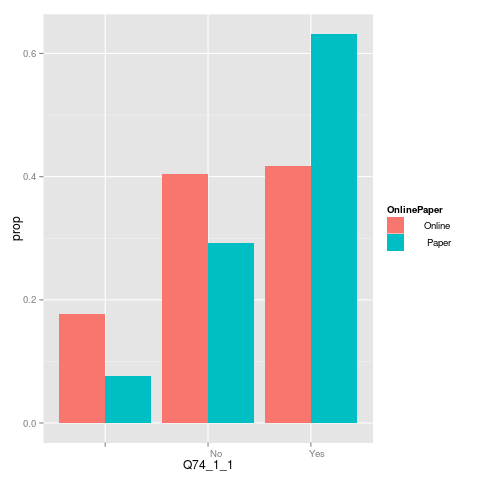I concur with Jeff Leek that once spent time learning base graphics in R there is less incentive to learn ggplot2 http://simplystatistics.org/2016/02/11/why-i-dont-use-ggplot2/
However I always hate the way barplot works. Here is an example:
qc <- read.csv(textConnection("id, OnlinePaper, Q, freq, totals, prop
1, Online, ,1768, 9950, 0.17768844
2, Online, No ,4022, 9950, 0.40422111
3, Online, Yes ,4160, 9950, 0.41809045
4, Paper, , 256, 3355, 0.07630402
5, Paper, No , 979, 3355, 0.29180328
6, Paper, Yes ,2120, 3355, 0.63189270"))
qc1 <- cast(qc, OnlinePaper ~ Q74 , value = "prop")
qc1
barplot(as.matrix(qc1), beside = T, legend.text = qc1[,1], ylim = c(0,1))
ggplot(data=qc, aes(x=Q, y=prop, fill=OnlinePaper)) +
geom_bar(stat="identity", position=position_dodge())
Going to extremes
I should say though that I have found barplot can produce very customised graphs that serve a specific purpose such as that below (I have de-identified the content as this is unpublished research)

This made heavy use of the following approach
# original by Joseph Guillaume 2009
SideBySideBarPlot2 <- function(aggAllData, ...) {
par(mar=c(8,7,4,2))
bp<-barplot(aggAllData,
horiz=FALSE,
col=gray.colors(nrow(aggAllData)),
las=1, axisnames = FALSE, ...)
labels <- names(as.data.frame(aggAllData))
text(bp, par('usr')[3], labels = labels, srt = 45,
adj = c(1.1,1.1), xpd = TRUE, cex=.9)
return(bp)
}
# with width = xvar (proportions)




